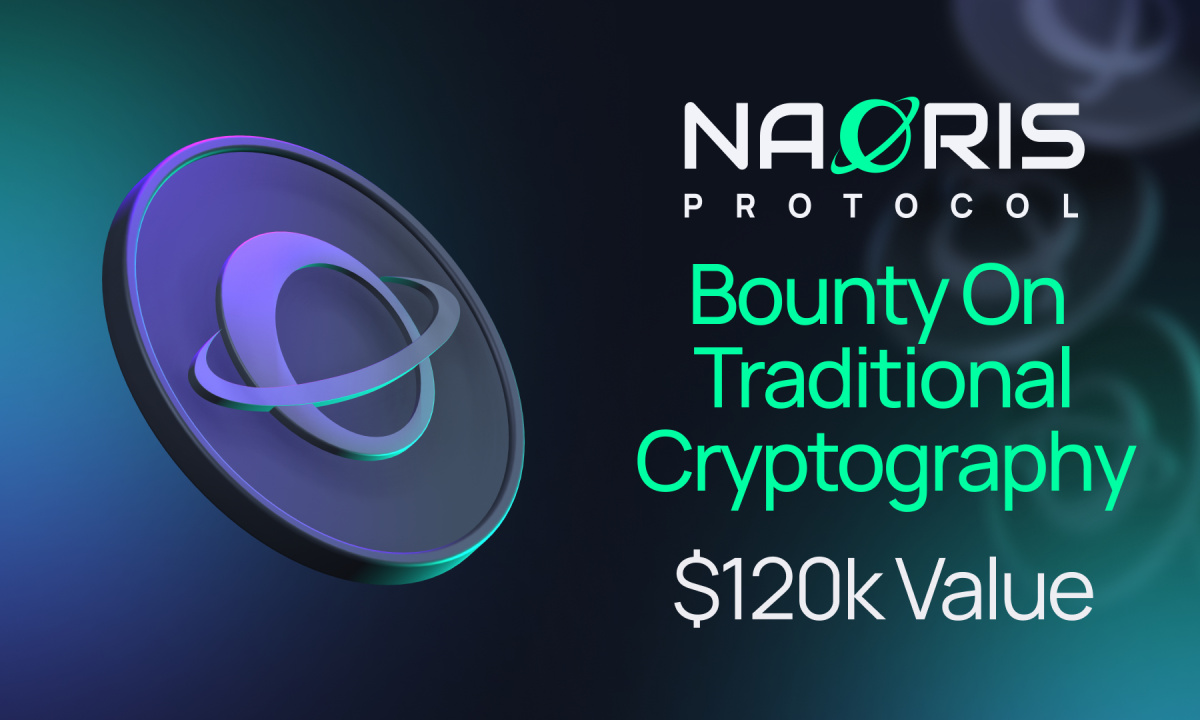The Quantum Threat and Naoris Protocol’s Bold Initiative
Introduction: The Digital Security Landscape
In an era where digital transactions, communications, and infrastructure form the backbone of global economies, the integrity of cryptographic systems is paramount. The advent of quantum computing, however, threatens to disrupt this delicate balance. Quantum computers, with their unprecedented computational power, could potentially break the encryption methods that safeguard everything from financial transactions to national security. Naoris Protocol, a forward-thinking entity in the cryptographic space, has taken a bold step to address this looming threat with a $120,000 bug bounty program. This initiative is not just about finding vulnerabilities; it’s about fortifying the future of digital security.
The Quantum Threat: A Growing Concern
Quantum computing is no longer a theoretical concept but a rapidly advancing technology. These machines leverage the principles of quantum mechanics to perform computations that are exponentially faster than classical computers. This capability poses a significant risk to current cryptographic systems, particularly those based on Elliptic Curve Cryptography (ECC). ECC, widely used in digital signatures, key exchange, and encryption, is vulnerable to attacks from quantum computers. The potential consequences of a successful quantum attack are dire, including the compromise of digital wallets, financial systems, and critical infrastructure.
Naoris Protocol’s Proactive Approach
Naoris Protocol’s $120,000 bug bounty program is a proactive measure to identify and address vulnerabilities in ECC before quantum computers become powerful enough to exploit them. By incentivizing researchers to find flaws in the cryptographic algorithms, Naoris Protocol aims to strengthen the digital security landscape. This approach is crucial for ensuring the long-term stability and security of the digital economy.
The Importance of Elliptic Curve Cryptography
Elliptic Curve Cryptography (ECC) is a cornerstone of modern digital security. Its efficiency and strong security make it ideal for resource-constrained environments like mobile devices and embedded systems. ECC is used in various applications, including digital signatures, key exchange, encryption, and cryptocurrencies. The widespread adoption of ECC underscores its importance in the digital landscape. However, its vulnerability to quantum attacks necessitates a robust defense strategy.
The Bug Bounty Program: A Detailed Look
Naoris Protocol’s bug bounty program is designed to thoroughly examine the strengths and weaknesses of ECC. The program invites researchers to identify vulnerabilities, develop exploits, and submit detailed reports. This initiative is not just about finding bugs; it’s about understanding the limits of current cryptographic methods and paving the way for more secure alternatives. The $120,000 bounty serves as a significant incentive for researchers to participate and contribute to the enhancement of digital security.
Post-Quantum DePIN Testnet: A Glimpse into the Future
Beyond the bug bounty program, Naoris Protocol is pioneering a post-quantum Decentralized Physical Infrastructure Network (DePIN). This testnet, which has already seen impressive early adoption with over 2.5 million transactions and 500,000 users in its first week, represents a significant step towards a future where digital infrastructure is inherently resistant to quantum attacks. The DePIN leverages decentralized cybersecurity principles to create a more robust and resilient network, ensuring that critical systems remain secure even in the face of advanced quantum computing capabilities.
Implications for Bitcoin and the Banking System
The potential consequences of a successful attack on ECC are far-reaching, particularly for Bitcoin and the global banking system. Bitcoin, with its $2.4 trillion market capitalization, relies heavily on ECC for securing transactions and maintaining the integrity of the blockchain. A quantum attack could compromise private keys, allowing attackers to steal funds and disrupt the network. Similarly, the $410 trillion global banking system depends on ECC to protect sensitive financial data and secure transactions. A successful attack could lead to massive financial losses, identity theft, and widespread economic instability.
Beyond the Bounty: A Holistic Approach to Security
While the bug bounty program is a critical component of Naoris Protocol’s strategy, it’s just one piece of the puzzle. The company is also focused on developing post-quantum cryptographic solutions, promoting standardization, educating the public, and building partnerships. These efforts are essential for accelerating the development and deployment of post-quantum technologies, ensuring that the digital world remains secure and trustworthy for generations to come.
Conclusion: Securing Tomorrow, Today
Naoris Protocol’s $120,000 bug bounty program is more than just a challenge; it’s a statement. It’s a declaration that the future of digital security demands proactive measures and innovative solutions. By confronting the quantum threat head-on, Naoris Protocol is not only safeguarding its own interests but also contributing to the security and stability of the entire digital ecosystem. As quantum computing continues to advance, initiatives like this will be crucial for ensuring that our digital world remains secure and trustworthy for generations to come. The race against the quantum threat is on, and Naoris Protocol is leading the charge.
A Quantum Leap for Security?
Ultimately, Naoris Protocol’s endeavors serve as a stark reminder that digital security is not a static concept, but rather a constantly evolving landscape. The emergence of quantum computing demands a paradigm shift in how we approach encryption and data protection. Whether Naoris Protocol’s specific approach proves to be the ultimate solution remains to be seen, but their proactive stance and commitment to innovation are undoubtedly essential for navigating the challenges of the post-quantum era. They are not just patching holes; they are building a new foundation, brick by encrypted brick.





